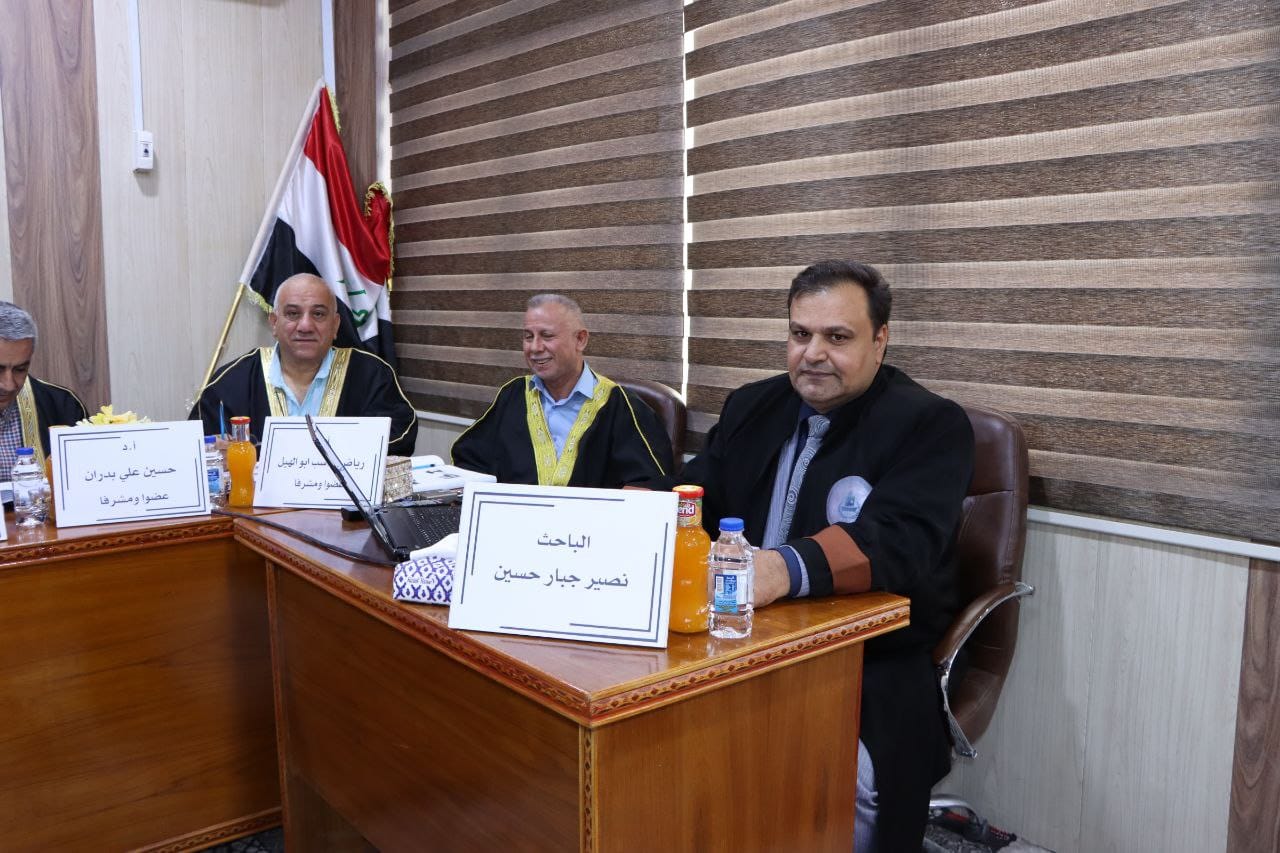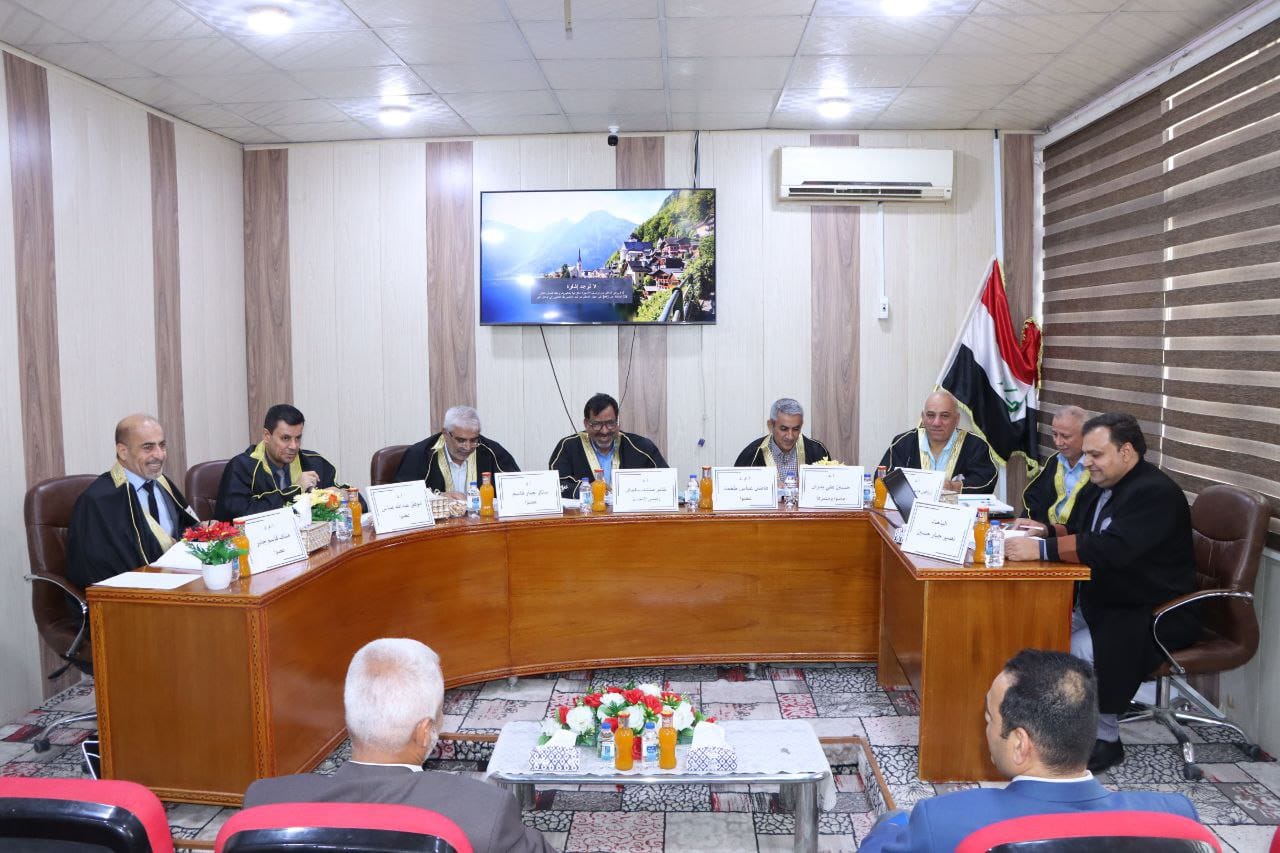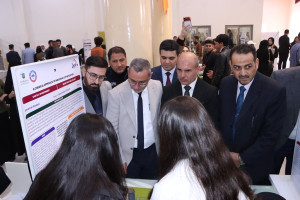
The College of Education for Pure Sciences, Department of Physics, discussed a doctoral thesis on
(Study of the optical properties and thermoluminescence of Himalayan salt and the possibility of using it in various applications)
The thesis presented by the researcher (Nasir Jabbar Hussein Al-Kriti) included
Studying the optical properties and thermoluminescence properties of pink Himalayan salt by studying and calculating the nonlinear refractive index and absorption coefficient using the z-scan technique in two ways (closed aperture and open aperture) and the glow curve and heat loss and the effect of grain size and the effect of changing the linear heating rate (β) and annealing and dose response on the intensity of thermoluminescence TL and calculating the thermoluminescence constants and the rate of lifetime and the probability of electron escape from the traps using the initial rise method (I.R) and the variable linear heating rate method (V.H.R) and comparing the results of pink Himalayan salt and the TLD200 dosimeter.
The study material was applied in environmental technology as a radiation dosemeter and optical limiting in applications of nonlinear optical properties.
The surface morphology and composition of pink Himalayan salt were studied by characterizing and analyzing the material by scanning electron microscopy (SEM), X-ray diffraction (XRD), infrared spectroscopy (FT-IR) and energy dispersive spectroscopy (SEM-EDS).
The results of the study of nonlinear optical properties showed that increasing the concentration of Himalayan salt mixed with bromocresol purple dye leads to an increase in both the refractive index and nonlinear absorption, and the highest value of the nonlinear refractive index and nonlinear absorption coefficient was 0.68 x10-7 and 0.53 x10-3 cm/w respectively at 2.5% H.S. It was also found that the values of the limiting threshold and the limiting amplitude depend on the concentration of the samples.
The study of the thermoluminescence properties found that the glow curve of pink Himalayan salt has two prominent peaks at about 204, 282 0C. When studying the effect of grain size on the response of the salt, it was observed that the intensity of thermoluminescence decreases with increasing grain size of the salt. The results showed that the dose response of Himalayan salt is linear over a wide range (250 mGy to 20 Gy). The rate of heat loss after irradiation showed a stability after 24 days at 32%. These results indicate that this material is very interesting as a measure of radiation doses in radiation accidents. The study was applied as an environmental standard for measuring doses of gamma rays in Karbala Governorate, Iraq, using TL 200 thermoluminescence standard and Himalayan pink salt granules. It was found that the gamma radiation dose rate for schools ranged between 7.16-4.8µ rad/h at a rate of 6.16µ rad/h, and the gamma radiation dose rate for hospitals ranged between 7.02-4.66 at a rate of 6.22µ rad/h. The results we obtained from applying Himalayan salt as a gamma radiation dose measure showed that the residential areas located within the environmental radiation monitoring stations are areas with a natural radiation level as far as the results of this research that were studied at the time are concerned.
The aim of the thesis
To search for new materials that have not been previously studied and to demonstrate the possibility of using them as radiation standardizers and optical determinants.
And study the thermoluminescence properties of Himalayan salt and compare the results with the TLD200 standard in order to use it as a radiation dose meter. And study the nonlinear optical properties of pink Himalayan salt mixed with dye and calculate both the nonlinear refractive index and the nonlinear absorption coefficient. And use pink Himalayan salt to carry out some important applications, such as measuring the gamma ray dose rate for hospitals, health centers and modern buildings in Karbala Governorate using the thermoluminescence technique and calculating the low dose rate to ensure their safety from radioactive contamination as well as carrying out optical properties applications for use in various industries by studying the optical limit.









